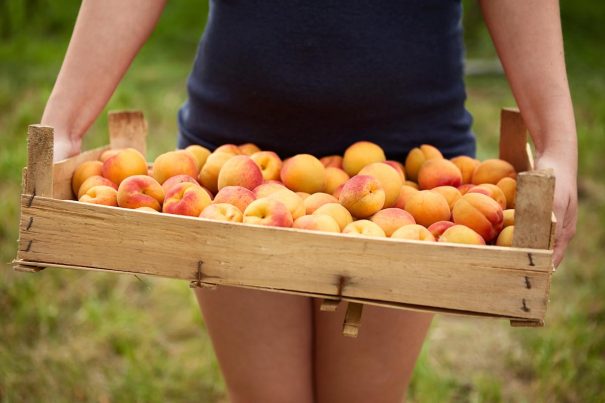
Natural pest management: Peach farmers are reducing crop loss to stink bugs by planting grains to lure them away
Thursday, August 23, 2018 by Michelle Simmons
http://www.realsciencenews.com/2018-08-23-natural-pest-management-peach-farmers-are-reducing-crop-loss-to-stink-bugs-by-planting-grains.html

Scientists from Auburn University in the U.S. found a way to manage pest naturally. They discovered that planting different grain crops attract pests away from the fruit, resulting to lesser crop loss.
For the study, the research team analyzed six winter host crops and six summer host crops as possible trap crops or attractant crops for leaf-footed and stink bugs in peaches from 2011 to 2013. The six winter host crops include hairy vetch, oats, rye, triticale, wheat, and winter peas, while the six summer host crops include buckwheat, brown top millet, grain sorghum, southern pea, pearl millet, and sunflower.
In the study, they arranged experimental plots around a mature peach orchard in a randomized complete block design. Then, they recorded insect densities and host plant phenology every week from March to May and July to August of each year.
The results of the experiment in the winter showed that wheat and oats attracted the most number of target insects among the other crops evaluated. On the other hand, sunflower, pearl millet, and sorghum attracted the most number of pests than any other host crops examined in the summer. In addition, the research team discovered that the greatest number of pests totaled across the season are the leaf-footed pests, which comprised more than 70 percent of the total, and were followed by brown stink bugs. These two pests are the main hemipteran pests of fruit, vegetable, and grain crops in Alabama and other parts of the southeastern U.S.A., according to the researchers. Furthermore, they also observed that target insects colonized the crops primarily during the reproductive phase, including flowering and seed development, until fully mature.
The findings of the study indicate that combining wheat and oats may determine the early presence of leaf-footed and stink bugs in the spring, while sunflower, pearl millet, and sorghum may be used to identify and attract colonizing pests away from peach orchards in the summer. The findings of the study were published in the journal Agricultural and Forest Entomology.
Preventing pests in natural ways
Avoiding or at least minimizing crop loss is important. One way is prevention. This can be done without the use of chemicals. Listed below are five techniques on how to prevent crop pests.
- Encourage beneficial insects – Beneficial insects, such as ladybugs, lacewings, minute pirate bugs, parasitic wasps, and damsel bugs, help minimize pests by eating them or using them to house and feed their developing young. In order to attract these beneficial bugs, supply them with protein-rich pest insects and carbohydrate-rich nectar.
- Select plants carefully – Preventing pests can be done by simply choosing pest-resistant varieties of crops. For example, butternut and royal acorn squash are naturally more resistant to squash bugs than other varieties.
- Put up physical barriers – Another useful method in preventing pests is to employ a physical barrier between the plant and the insect. Cover plants with floating row cover, which is a lightweight, spun-bound fabric placed on top of the plants or on wire hoops.
- Make use of intercropping – Interplanting or intercropping different crops with each other and with flowering herbs and annuals, pests may get confused and have a harder time locating their target plants.
- Grow healthy crops – Growing healthy plants is one of the most important ways to prevent pests because when plants are healthy, they are naturally less attractive to pests. In addition, they are better in using their own chemical defense systems to ward off pests.
Read more stories about farming and agriculture at Harvest.news.
Sources include:
Tagged Under: Tags: agriculture, crop loss, crops, Ecology, ecosystem, environment, farming, goodscience, grains, harvest, insects, leaffooted bugs, natural pest control, nonchemical pest prevention, Peach, pest prevention, pests, Planting, reducing crop loss, stink bugs





